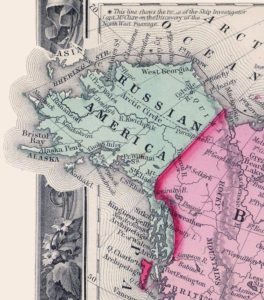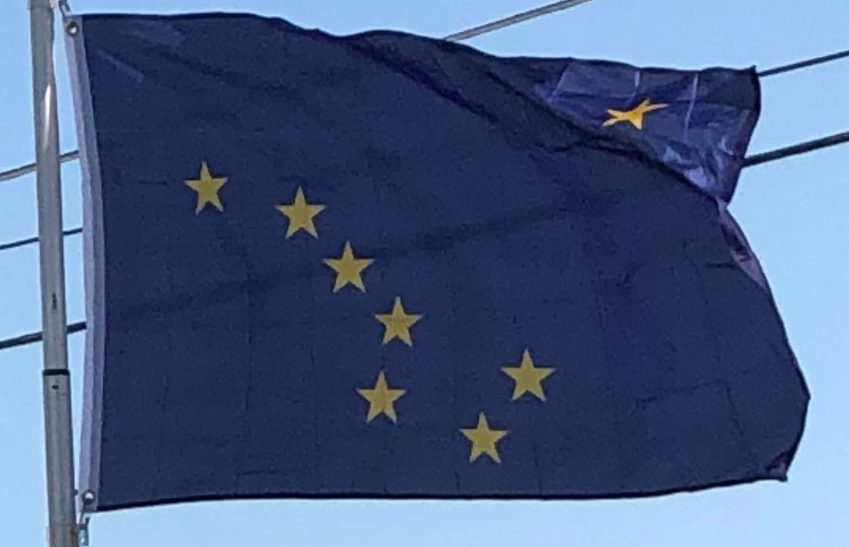The Aleutian Islands are still home to the Aleut people’s seafaring society, although they were the first Native Alaskans to be exploited by Russians. Western and Southwestern Alaska are home to the Yup’ik, while their cousins the Alutiiq ~ Sugpiaq lived in what is now Southcentral Alaska. The Gwich’in people of the northern Interior region are Athabaskan and primarily known today for their dependence on the caribou within the much-contested Arctic National Wildlife Refuge. The North Slope and Little Diomede Island are occupied by the widespread Inupiat people.
Colonization:
Some researchers believe that the first Russian settlement in Alaska was established in the 17th century. According to this hypothesis, in 1648 several koches of Semyon Dezhnyov’s expedition came ashore in Alaska by storm and founded this settlement. This hypothesis is based on the testimony of Chukchi geographer Nikolai Daurkin, who had visited Alaska in 1764–1765 and who had reported on a village on the Kheuveren River, populated by “bearded men” who “pray to the icons”. Some modern researchers associate Kheuveren with Koyuk River.
The first European vessel to reach Alaska is generally held to be the St. Gabriel under the authority of the surveyor M. S. Gvozdev and assistant navigator I. Fyodorov on August 21, 1732, during an expedition of Siberian cossak A. F. Shestakov and Belarusian explorer Dmitry Pavlutsky (1729–1735).
Another European contact with Alaska occurred in 1741, when Vitus Bering led an expedition for the Russian Navy aboard the St. Peter. After his crew returned to Russia with sea otter pelts judged to be the finest fur in the world, small associations of fur traders began to sail from the shores of Siberia toward the Aleutian Islands. The first permanent European settlement was founded in 1784.

Between 1774 and 1800, Spain sent several expeditions to Alaska in order to assert its claim over the Pacific Northwest. In 1789 a Spanish settlement and fort were built in Nootka Sound. These expeditions gave names to places such as Valdez, Bucareli Sound, and Cordova. Later, the Russian-American Company carried out an expanded colonization program during the early-to-mid-19th century.
Sitka, renamed New Archangel from 1804 to 1867, on Baranof Island in the Alexander Archipelago in what is now Southeast Alaska, became the capital of Russian America. It remained the capital after the colony was transferred to the United States. The Russians never fully colonized Alaska, and the colony was never very profitable. Evidence of Russian settlement in names and churches survive throughout southeast Alaska.

On March 30, 1867, the United States purchased Alaska from the Russian Empire for the sum of $7.2 million. It was not until October of that year that the commissioners arrived in Sitka and the formal transfer was arranged. The formal flag-raising took place at Fort Sitka on October 18, 1867. The original ceremony included 250 uniformed U.S. soldiers, who marched to the governor’s house at “Castle Hill”. Here the Russian troops lowered the Russian flag and the U.S. flag was raised. This event is celebrated as Alaska Day, a legal holiday on the 18th of October.
